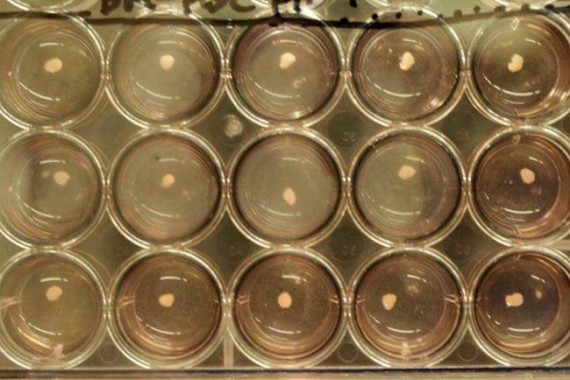Scientists Use Stem Cells To Develop Rudimentary Human Livers
Scientists have apparently succeeded in using stem cells to create what could one day become the seeds of replacement livers for human beings:
Researchers in Japan have used human stem cells to create tiny human livers like those that arise early in fetal life. When the scientists transplanted the rudimentary livers into mice, the little organs grew, made human liver proteins, and metabolized drugs as human livers do.
They and others caution that these are early days and this is still very much basic research. The liver buds, as they are called, did not turn into complete livers, and the method would have to be scaled up enormously to make enough replacement liver buds to treat a patient. Even then, the investigators say, they expect to replace only 30 percent of a patient’s liver. What they are making is more like a patch than a full liver.
But the promise, in a field that has seen a great deal of dashed hopes, is immense, medical experts said.
“This is a major breakthrough of monumental significance,” said Dr. Hillel Tobias, director of transplantation at the New York University School of Medicine. Dr. Tobias is chairman of the American Liver Foundation’s national medical advisory committee.
“Very impressive,” said Eric Lagasse of the University of Pittsburgh, who studies cell transplantation and liver disease. “It’s novel and very exciting.”
The study was published on Wednesday in the journal Nature.
Although human studies are years away, said Dr. Leonard Zon, director of the stem cell research program at Boston Children’s Hospital, this, to his knowledge, is the first time anyone has used human stem cells, created from human skin cells, to make a functioning solid organ, like a liver, as opposed to bone marrow, a jellylike organ.
There are many years of testing and research ahead, but the implications of this ought to be rather obvious. The idea of being able to treat organ damage genetically has been a dream ever since stem cells were first discovered. Now, we’re one step closer to that day.





I’ll drink to that!
Of course, it was in Japan and not the US. I guess out there they don’t have to ask pro-life evangelicals for permission to work with stem cells. They just do it.
More of that hippy-dippy science BS…
But stem cell research is wrong therefore this post is incorrect.
Q.E.D.
Great! Where do I sign up? Best get on the list now ….
Greetings:
So, were they embryonic stem cells or not ???
And meanwhile, back in California, that epitome of progressive governance, the taxpayers are paying how much off in stem cell bonds ???
@ 11B40
Yes, the people of California are funding research that has the potential to alleviate untold suffering.
The horror.
The horror.
@James Pearce (Formerly Known as Herb): @11B40:
Reading comprehension is fundamental. The last paragraph above:
Although human studies are years away, said Dr. Leonard Zon, director of the stem cell research program at Boston Children’s Hospital, this, to his knowledge, is the first time anyone has used human stem cells, created from human skin cells, to make a functioning solid organ, like a liver, as opposed to bone marrow, a jellylike organ.
@OzarkHillbilly: So the stem cells in question were not fetal stem cells, and therefore not covered under US laws restricting the use of fetal stem cells.
I haven’t followed stem cell research that closely for the past few years, but at one point there were far more positive results from non-fetal cells than fetal cells.
@Jenos Idanian: There is truth in what you’re saying. There’s a lot of recent interesting (to lay persons like me) research into coercing differentiated cells like skin cells back into pluripotent stem cells by playing with the environment. A good (but with some chemistry) read is the book “The Epigenetics Revolution” by Nessa Carey.
As for the liver cells, it’s all well and good until the karaoke compulsion kicks in.
@Jenos Idanian:
There were never any federal laws restricting the use of embryonic stem cells. There was only a limit on federal funding, which Obama lifted by executive order in 2009.